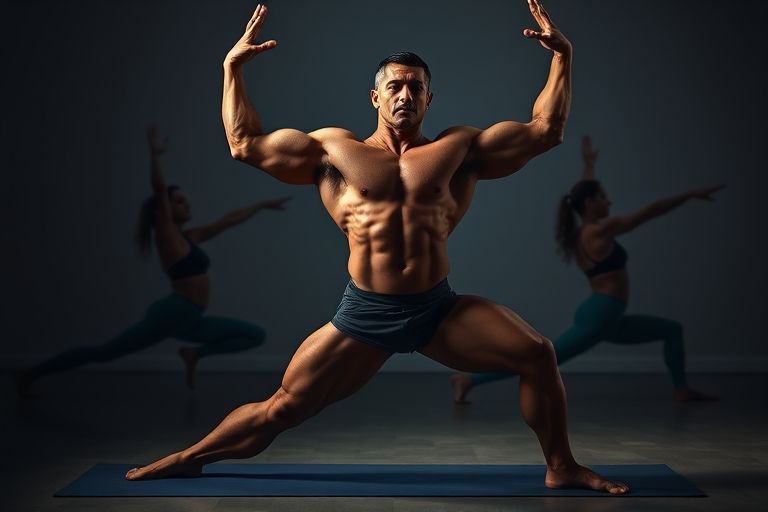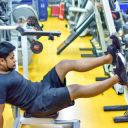

When we think of bodybuilders, we often envision individuals with bulging muscles and incredible strength. Their dedication to weightlifting and rigorous training regimens is evident in their impressive physiques. However, there is a lesser-known aspect of bodybuilding that tends to be overlooked – flexibility. While flexibility is crucial for overall health and athletic performance, many bodybuilders struggle to achieve and maintain optimal flexibility levels. This article explores the paradoxical relationship between bodybuilding and flexibility, shedding light on the reasons behind this phenomenon.
Flexibility is a fundamental aspect of physical fitness that encompasses the range of motion around a joint. It allows us to perform various movements effectively and efficiently, reducing the risk of injuries. For athletes, flexibility is particularly vital as it enhances performance in sports that require agility and quick movements. Additionally, flexibility contributes to good posture, balance, and overall body alignment, promoting optimal muscle function.
However, bodybuilders often face challenges in attaining and maintaining adequate flexibility levels. The intense focus on building muscle mass through resistance training can inadvertently lead to reduced flexibility. Let's explore some of the factors contributing to this paradox.

Bodybuilders typically prioritize strength and muscle hypertrophy, leading to muscle imbalances. In pursuit of a well-defined physique, they often focus on specific muscle groups while neglecting others. This imbalance can result in limited joint mobility and reduced flexibility in certain areas of the body.
The nature of resistance training in bodybuilding involves controlled, repetitive movements within a limited range of motion. While this approach effectively targets specific muscle groups, it can restrict the overall mobility of joints. Over time, this limited range of motion can hinder flexibility and make it challenging to perform exercises that require greater joint flexibility.
The pursuit of muscle hypertrophy, a primary goal in bodybuilding, often leads to significant muscle mass gains. While this is desirable for bodybuilders, it can also contribute to reduced flexibility. The increase in muscle mass may cause muscle bulkiness and tightness, limiting the range of motion and impeding overall flexibility.
Bodybuilders' rigorous training regimens often result in increased connective tissue stiffness. The repetitive stress placed on muscles and joints can lead to the development of adhesions and scar tissue, reducing the elasticity of the connective tissues. This stiffness further hampers flexibility and limits joint mobility.

While bodybuilders face inherent challenges in maintaining flexibility, it is not an insurmountable obstacle. By incorporating specific strategies into their training routines, bodybuilders can improve their flexibility while still achieving their muscle-building goals. Here are some effective approaches to address the flexibility paradox:
Bodybuilders can incorporate dynamic stretching exercises into their warm-up routines. Dynamic stretching involves moving through a full range of motion with controlled momentum. This type of stretching helps improve flexibility and prepares the muscles and joints for the upcoming workout.
Including active recovery sessions in their training schedule can benefit bodybuilders in multiple ways. Low-intensity activities such as yoga, Pilates, or swimming can help relax tight muscles, improve blood circulation, and promote flexibility. Active recovery also aids in reducing muscle soreness and preventing injuries.
Using foam rollers or seeking regular massage therapy can help alleviate muscle tightness, break up adhesions, and enhance flexibility. These techniques target the connective tissues and muscles, promoting increased blood flow and improved range of motion.
Incorporating dedicated stretching exercises into their routine can gradually improve flexibility for bodybuilders. Stretching should be performed after workouts when the muscles are warm and more pliable. Focus on stretching the major muscle groups and holding each stretch for at least 30 seconds.
While bodybuilders may initially perceive flexibility as secondary to muscle size and strength, it plays a crucial role in their overall performance and well-being. By prioritizing flexibility, bodybuilders can experience the following benefits:
1. Can bodybuilders achieve both muscle mass and flexibility?
Yes, bodybuilders can achieve both muscle mass and flexibility by incorporating specific flexibility training techniques into their routines. It requires a balanced approach that includes stretching exercises, dynamic warm-ups, and regular active recovery sessions.
2. Does increased muscle mass always lead to reduced flexibility?
While increased muscle mass can contribute to reduced flexibility, it is not an absolute outcome. By implementing targeted flexibility training and addressing muscle imbalances, bodybuilders can effectively maintain or improve their flexibility levels.
3. How often should bodybuilders perform flexibility exercises?
Ideally, bodybuilders should aim to perform flexibility exercises at least two to three times a week. Consistency is key to gradually improving flexibility over time.
4. Can improved flexibility benefit bodybuilders' muscle gains?
Yes, improved flexibility can indirectly benefit bodybuilders' muscle gains. Enhanced flexibility allows for a broader range of motion during exercises, which can lead to better muscle activation and development in various muscle groups.
In conclusion, bodybuilders face a paradoxical relationship with flexibility due to their focus on muscle hypertrophy and resistance training. However, by incorporating targeted flexibility training techniques into their routines, bodybuilders can overcome this paradox and enjoy the benefits of improved flexibility. Balancing muscle mass and flexibility is essential for overall athletic performance, injury prevention, and long-term health.